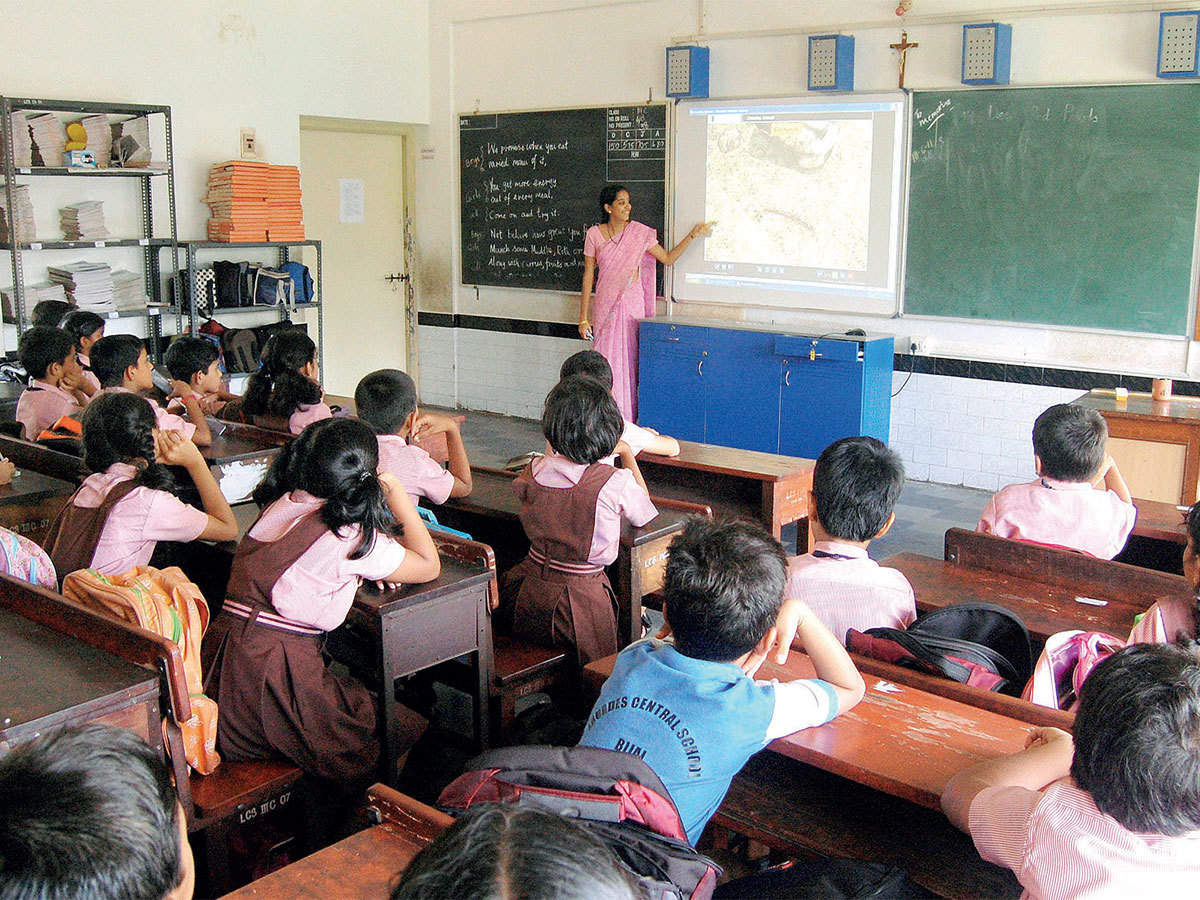
Does 15 years of School Education and 3 – 6 years of Higher Education prepare the children for the realities of 21st century? Is the Child in Nursery today being prepared for the world in 2035? The answer is a resounding no, if the current education system continues.
Indian Education System has woken up late to the realities of 21st century by about 18 years. While the economy, industry, work place and society was being transformed quietly across the world, little did the Policy Makers of Human Resource Development in India imagine its impact on Schools and Colleges.
Over the last 18 years, our life has transformed. The way we communicate, work, socialize, interact, travel, network, earn and learn has completely changed. Unfortunately, what has not changed is the way teachers teach in Schools.
For the uninitiated, picture this: On the ring of the bell, a teachers walks into the Grade 2 of a typical CBSE School with about 40 students seated orderly in desk. The students have just completed a 35-minute period of English and are now ‘prepared’ to devour the knowledge of Environmental Science (EVS).
The Teacher would ask students to open the textbook and read out the lesson. Some explanation is given and at times a multimedia-animated video is shown. The students are expected to understand and remember all the information. Raising hands to ask question makes the student a pariah.
So, everyone nods their head stating their understanding of the concept. The period of EVS would end with home assignment or solving the objective questions in the textbook. The bell rings and students get prepared for the next period, and a new topic.
Table of Contents
Many enlightened souls may argue, “What’s wrong with this”? Let us decode:
1. Life is integrated and so are its problems and solutions. The factory-based model of compartmentalized learning is no longer suited to our modern, networked world. We need to understand concepts in totality and not just as a concept of English or EVS. Integrated learning where concepts are dealt across a broad spectrum of subjects is not only a smart way of learning but also most relevant and practical way of teaching.
2. A student who is engrossed in a topic and curious, will not find a way to nurture it further under the 35 minute period. By the time his interest develops in the topic, the time is up for a new topic. Period after Period the curiosity and interest in learning is killed. The teacher is focused on completing the syllabus and ignores the joy of learning.
3. Learning is a creative process and cannot be dealt mechanically, straight out of the textbook. When we all agree that every child is unique, then why do we end up teaching the same topic to all the 40 children in time slots that are pre-decided.
What if some of the children are interested to explore Arts instead of Maths at a particular point of time? The problem with traditional Schools is that each Section in each Grade is treated like a Batch ready for production in the Factory called School.
4. Teaching out of textbook encourages rote learning sans understanding. The practice also makes students opt for Tuition Classes to get better understanding of the concepts, where the teacher to student ratio is normally less than 1:5.
Also Read, International Advantage with Indian Education.
Solutions
The solution is in placing the child at the center of our education system. A shift in mindset is required where we begin with trying to understand how a child learns rather than how a teacher teaches. We cannot sacrifice the future of India’s children for the sake of conformity with traditional rhetoric. We can prepare our next generation for the 21st century by adopting the following:
1. An integrated approach to learning where the focus shifts to concepts rather than subjects.
2. The recent announcement of MHRD to reduce the syllabus by 50% is most welcome. This will provide time, energy and resources to focus on developing the critical 4Cs of 21st century education, communication, critical thinking, collaboration and creativity.
3. Transform the Assessment and Evaluation in Schools and focus on qualitative assessment of child using continuous and comprehensive tools of evaluation, with proper feedback loop for child to grow. The annual examination must be changed to learning & developmental milestones with evaluations over a continuum of time.
4. We must aim to connect the learning to real world around the child, and make learning contextual. The textbook driven approach restricts the creativity and innovation of teacher.
5. Activity Based Learning, Experiential learning, Project Based Learning, Teaching for Understanding, Design Thinking are some of the modern tools and practices that can be used to nurture the child for the future needs of Society and Industry.
6. The B.Ed and Diploma Programs in Teaching must be re-designed keeping in mind the needs of the 21st century learner.
7. The School Building and Campus must all be re-designed to reflect the new approach towards teaching. We need more flexible learning environments.
Today, the word “school” does not capture the rich purpose and requirements of 21st century learners, who learns everywhere, all the time and is not constrained by the boundaries of the classroom. If Schools are to be relevant in future, it will have to adopt the 21st century teaching techniques.



